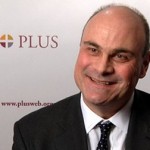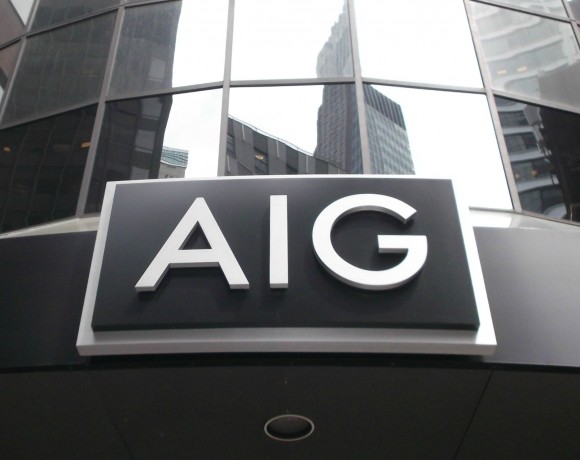American International Group Inc. Chief Executive Officer Peter Hancock, who took over the top job in September, said he plans to sell more businesses that don’t align with the insurer’s biggest moneymakers.
“Floating or selling businesses that lack current or realizable potential synergy with our core operations” remains a key initiative, Hancock, 56, said Monday in his first letter to investors as head of the company. He became CEO in September after his predecessor, Robert Benmosche, sold assets and cut jobs to help repay a $182.3 billion government bailout.
Hancock’s letter was published on the same day as reports that AIG

AIG CEO
Chairman Steve Miller plans to step down from the post this year. Miller, 73, plans to relinquish his position, according to a person familiar with the matter. He’s still a candidate to remain a director.
After joining the board in 2009, Miller became chairman in July 2010. Company policy limits the chairman to a five-year term, which is unlikely to be extended in this case, said one of the people, who asked not to be identified speaking about board personnel matters.
As chairman, Miller helped oversee AIG’s repayment of more than $182 billion to the U.S. government and the hand-off from former CEO Robert Benmosche to Hancock.
A spokesman for AIG declined to comment on Miller. The Wall Street Journal reported on his plans earlier Monday.
Executive Pay
Also Monday, AIG said that Hancock was paid $12.06 million for 2014, with a base salary of $1.43 million. In its proxy filing, the insurer said that Jay Wintrob, who left the firm in 2014 after he was passed over for the CEO job, received compensation valued at $15.2 million in his last year.
More than 40 percent of Wintrob’s pay came in a $6.52 million lump-sum severance. Wintrob, 58, was hired by Oaktree Capital Group LLC, the world’s biggest distressed-debt investor, as CEO in October with annual compensation of at least $5 million.
Hancock said in Monday’s letter that he’s focused on AIG’s “intrinsic value,” not its market cap, and is working to avoid excessive risk. That’s a shift from the era of ex-CEO Maurice “Hank” Greenberg, who built AIG into the world’s largest insurer by acquiring businesses in his 38-year tenure through 2005. The firm’s market value has shrunk by about half since the financial crisis.
Resisting Urge
“Managing our business to maximize intrinsic value in a sustainable way means resisting the urge to blindly pursue market share and sales volume,” Hancock said.
AIG said Monday that it sold part of its holding in PICC Property & Casualty Co., China’s biggest non-life insurer, for about $500 million. AIG invested $500 million as part of PICC’s initial public offering in 2012, according to an AIG statement in 2013. The U.S. insurer said Monday that it retains about 1.2 billion PICC shares, or about an 8.2 percent stake.
Hancock’s focus on intrinsic value “means not being distracted by normal quarterly fluctuations in earnings per share, and instead patiently working to deliver growth in book value per share” at a target of 10 percent yearly, he said.
His statements echo those of Berkshire Hathaway Chairman Warren Buffett, who has said intrinsic value, which accounts for the amount of cash that can be taken out of a business in its lifetime, is the best tool for evaluating his company. Buffett uses the metric to evaluate share buybacks and dividend increases.
Benmosche’s Moves
It also continues the legacy of Benmosche, who sold ILFC last year and American Life Insurance Co. in 2010. While Benmosche reduced the company’s debt, repaid taxpayers and returned the company to profitability, the insurer was burned by higher-than-expected costs in commercial segments including workers’ compensation during his tenure.
Hancock reiterated his commitment to invest in science, data and analytics to manage risk and evaluate opportunities. He said simplifying operations helps the company absorb costs of compliance, risk management and technology, while continuing to reduce general operating expenses by as much as 5 percent yearly.
“Our recent history has also taught us that complexity jeopardizes long-term shareholder value,” Hancock said. “A key element of our plan is further simplifying AIG’s business and operating models, and creating structures that promote clear accountability.”
–With assistance from Noah Buhayar in Seattle and Doni Bloomfield in New York.
Related:
- New CEO Hancock Puts Stamp on AIG Management in Shake-Up
- Under New CEO Hancock, Smaller AIG Expected to Focus on Growth
- Atypical P/C Executive: Chartis CEO Hancock on Fear, Regulation, Science and More
Topics AIG
Was this article valuable?
Here are more articles you may enjoy.



 Jury Awards $80M to 3 Former Zurich NA Employees for Wrongful Termination
Jury Awards $80M to 3 Former Zurich NA Employees for Wrongful Termination  California Sees Two More Property Insurers Withdraw From Market
California Sees Two More Property Insurers Withdraw From Market  Here’s Why Experts Don’t Think Cloud Seeding Caused Dubai Flooding
Here’s Why Experts Don’t Think Cloud Seeding Caused Dubai Flooding  Ban on Worker Noncompetes Faces Uphill Legal Battle
Ban on Worker Noncompetes Faces Uphill Legal Battle 

